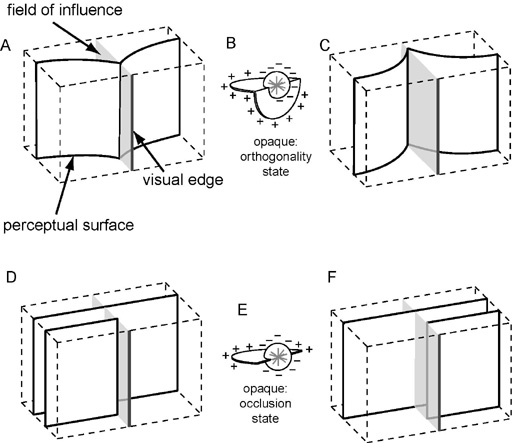
From: The World In Your Head by Steven Lehar

Fig. 4.3 (A) A visual edge projects a field of influence into the depth dimension of the perceptual matrix, which changes the dynamic behavior of opaque-state elements within that field of influence from the coplanarity state to (B), the orthogonality state, which completes the perceived surface through a right angled corner coincident with the visual edge. (C) The corner percept can occur either in convex or concave form. (D) Alternatively, the visual edge can promote an occlusion percept by inducing opaque-state elements to change to (E), the occlusion state, with a coplanar field extending in one direction only. (F) This percept too can occur either in left-over-right or right-over-left forms. The final effect of a visual edge therefore is to produce a multistable percept that can alternate spontaneously among the four states shown in (A), (C), (D), and (F).